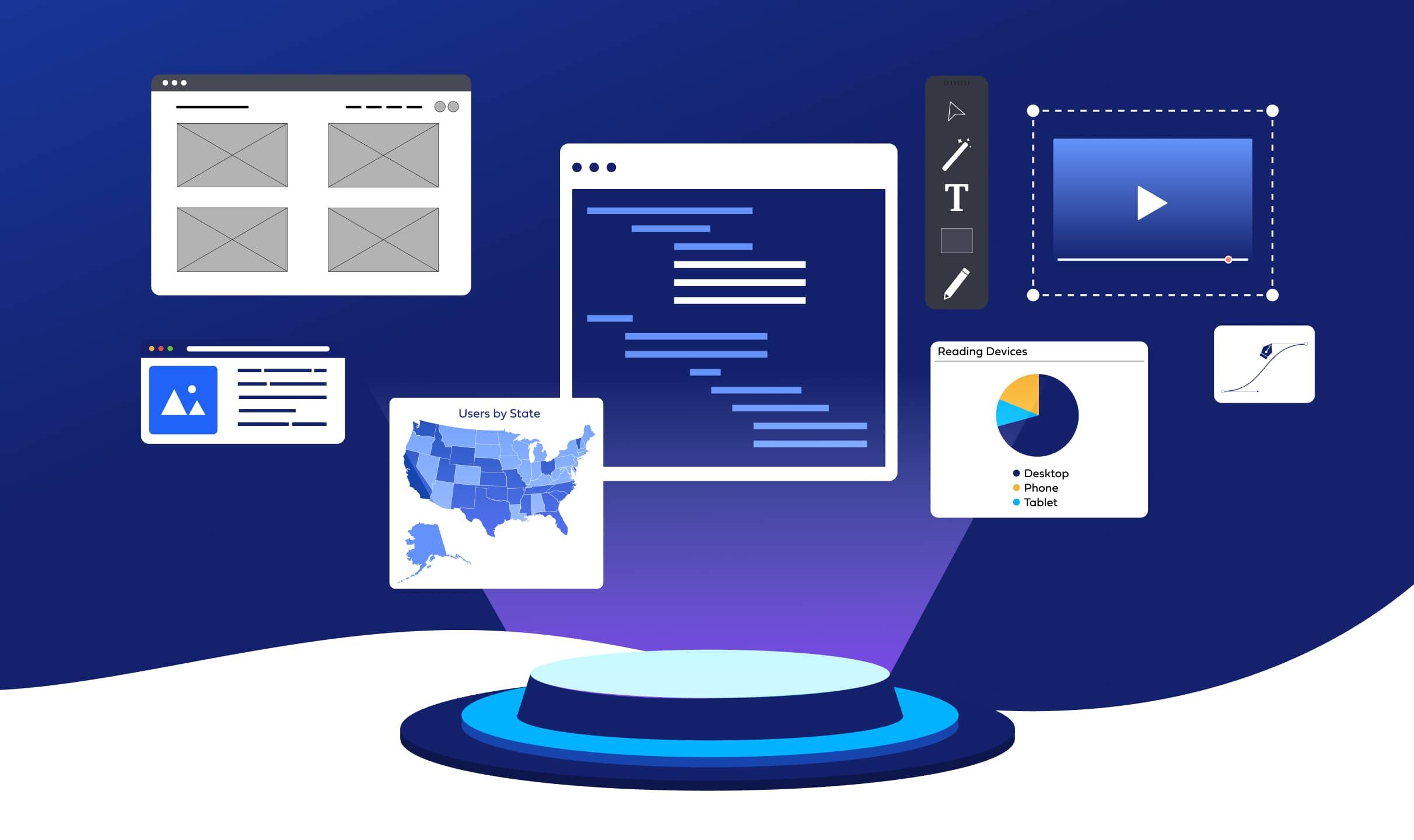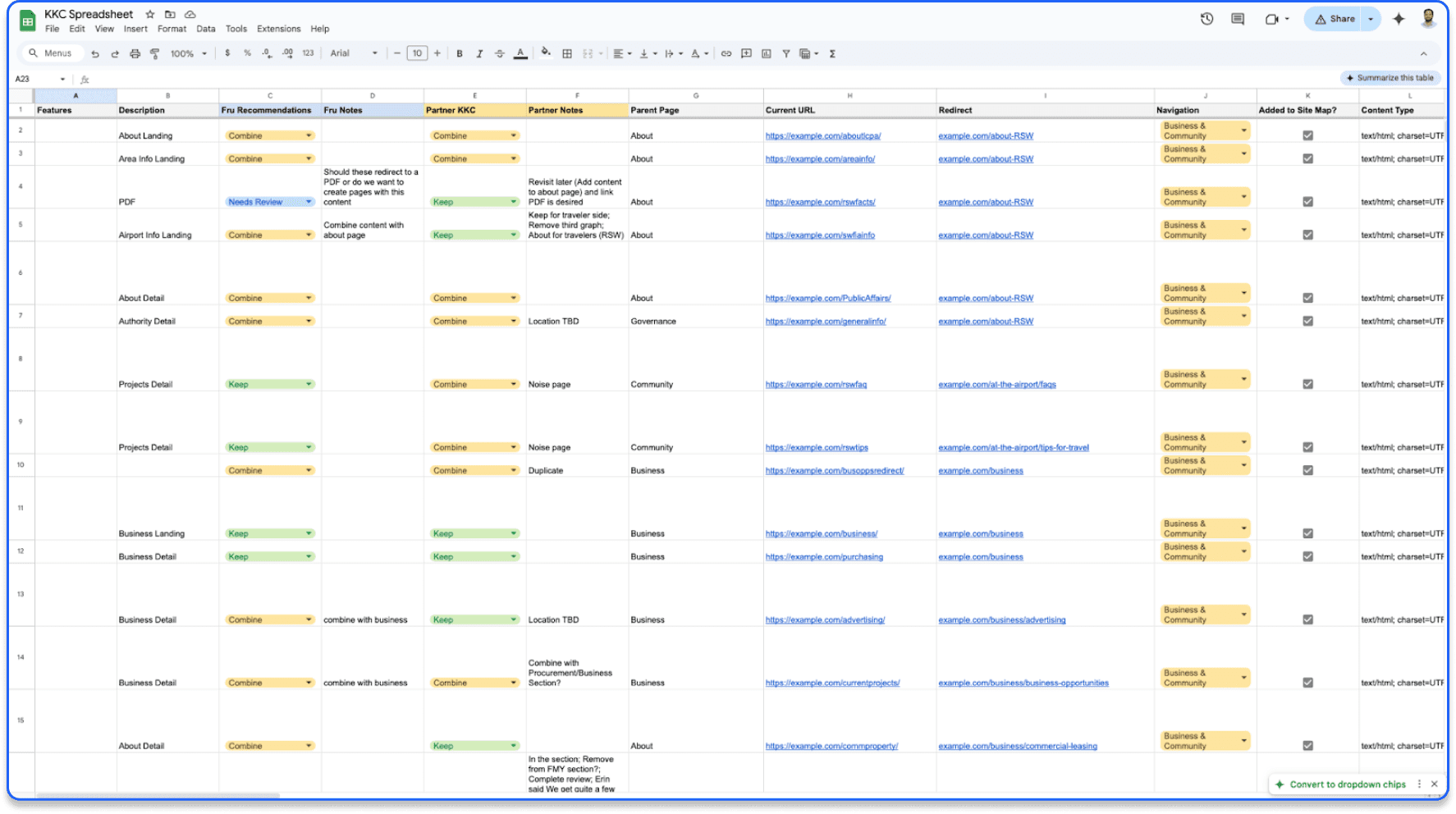The Website Redesign Process: What to Expect Before You Start

The Website Redesign Process: What to Expect Before You Start
Redesigning a website is a significant endeavor that requires a well-planned strategy to ensure success. Websites are increasingly complex, necessitating robust content strategies to meet both user needs and search engine requirements. At Fruition, we adopt a collaborative approach that extends beyond just the aesthetic appeal of your site. We often encounter clients with aging websites that demand comprehensive content curation and an overhaul of information architecture. Our aim is to deliver not only a modern and visually appealing design but also a user-friendly and brand-consistent online presence through an effective website redesign process.
What Comes First In a Website Redesign Project?
Before diving into wireframing or visual design, we engage in ‘Discovery’ exercises with your team. These exercises are crucial for aligning stakeholders on the redesign’s purpose and goals, helping to establish a solid foundation for the new site. You can undertake similar exercises internally to help you prepare for the project and potentially expedite this process with your chosen agency. To make sure you’re prepared for the entire website redesign process, follow our preparation steps below.
How to Prepare for Your Website Redesign Kick-Off & Discovery
1. Setting Goals
Website redesigns can stem from various needs, such as incorporating new branding elements. However, they often evolve into broader discussions about content, imagery, and functionality. We initiate projects with a stakeholder questionnaire to gather insights from various departments, including customer service, sales, and marketing. This comprehensive feedback ensures we capture the entire organization’s expectations and set clear website redesign goals.
Example: If your primary goal is to improve user engagement, consider objectives like enhancing the user interface (UI) for easier navigation or integrating interactive elements that encourage user interaction. We incorporated a live ordering system for a client that updated the UI and still delivered orders to their tracking system. This kept users on their site and delivered a much-improved user experience.
Get a head start: Conduct an internal survey to identify key goals for your redesign. This insight will clarify the project’s scope, facilitate communication with potential agency partners, and assist in estimating budget and timelines.
2. Measuring Success
Defining success metrics early in the website redesign process is essential. Whether the goal is to boost organic traffic or generate more leads, aligning design decisions with these objectives is crucial. Post-launch, we reassess these metrics to evaluate the site’s performance, implementing A/B tests or improvements as necessary.
Example: Utilize tools like Google Analytics to track changes in website performance metrics, including traffic patterns, bounce rates, and conversion rates post-launch. Analyze these metrics regularly to refine strategies and design elements.
Get a head start: Document current performance metrics and consider any new ones relevant to your goals. Share this list with your agency to align design decisions with measurable outcomes.
3. Curating Content
Our ‘Keep, Kill, Combine’ exercise helps organize and refine your site’s content. We plan the content structure and migration for the new site by assessing each page’s relevance. This process ensures that only valuable and aligned content remains, contributing to a streamlined and effective user experience.

Example: If a blog section is outdated, consider updating it with fresh content that aligns with current trends and user interests or merge related topics into comprehensive guides.
Get a head start: Audit your site’s content to determine what to keep, remove, or combine. Organize your findings to facilitate collaboration with your redesign team. This website content audit will set a solid foundation for content strategy.
4. Planning Navigation
With a clear understanding of the required content, we develop a navigation system that enhances user experience. Good navigation is intuitive, allowing users to find what they need quickly and easily. This step involves creating a site map that visually represents your site’s hierarchical structure.

Example: We’ve had clients that previously organized products and services into pages nested under broader ‘areas of service,’ but our research found that breaking these out into individual ‘Services’ and ‘Products’ navigation items helped users find relevant content faster and led to more conversions.
Get a head start: Consider user feedback on navigation and outline an ideal site structure. This proactive approach will streamline the design process and improve the UX process for website redesign.
5. Branding Consistency
Beyond logos and colors, your brand should resonate throughout the website. We conduct tone and voice workshops and visual brand analyses to ensure alignment with your brand’s vision. This process helps maintain a cohesive brand identity across all touchpoints, integral to UI/UX website design.

Example: We’ll often develop a digital style guide that outlines brand colors, typography, and imagery guidelines to ensure consistency across web pages and align with the larger brand vision you bring to us.
Get a head start: Compile brand guidelines and existing creative materials. If content support is needed, provide any copywriting guidelines to facilitate consistency.
6. Competitor Analysis
Understanding the competitive landscape is vital for differentiation. We analyze competitors to identify best practices and pitfalls, inspiring innovations for your new site. This analysis can uncover opportunities to offer unique value propositions that set your site apart.
Example: Identify gaps in competitors’ offerings and consider how your redesigned site can address these areas to attract and retain users.
Get a head start: List top competitors and evaluate their online presence. This groundwork will inform our competitive analysis and save time during the project.
7. Importance of Accessibility
In today’s digital landscape, accessibility in web design is critical, but every organization has a different budget and threshold for how much time and energy is spent on this effort. We take accessibility into account with our design and development process but also partner with accessibility experts to meet and document how the site was built to adhere to WCAG 2.2 A/AA guidelines. It’s essential to understand the effort you want to make to meet these guidelines with your new website.
Example: Government agencies in many states must complete VPATs and post Accessibility Statements on their website, or they could be fined. For these cases, we complete full accessibility audits with live users to ensure WCAG 2.2 A/AA guidelines have been met.
Get a head start: Have conversations with your leadership team about what level of accessibility you need to meet. You may want to discuss this with your legal counsel as well.
8. Engaging Users in the Redesign Process
Involving users in the redesign process can provide valuable insights into their preferences and needs. Conducting user surveys, interviews, or usability testing can inform design decisions and enhance user satisfaction. We often conduct stakeholder interviews with your internal stakeholders, adding an extra layer of context to our design decisions.
Example: To gather as much feedback as possible from external stakeholders (or users of your site), we often post online surveys that these users can take, sometimes with a gift card incentive to drive more completions.
Get a head start: If you want to conduct surveys and interviews with internal and external users as a part of the redesign project, begin preparing a list of these stakeholders and how you might engage with them.
9. CMS & Hosting
Last, it’s important to go into a website redesign project with a solid idea of what content management system (CMS) you might want to use and where to host the website once it’s ready to launch. A good starting point for figuring out the CMS you want to use is reflecting on the current CMS and identifying the positives and negatives you and your organization have had with it. Additionally, you’ll want to think about ease of use and the effort required to maintain and keep the CMS updated. For hosting, do some research, or talk to your agency partner once you’ve made those decisions. They should be able to guide you to a reliable hosting environment that will support your new site.
Example: We’ve seen many organizations migrate from Drupal to WordPress due to costly maintenance fees and a less intuitive administration panel. We’ve also seen organizations on WordPress with very messy backends and tons of plugins looking for a simpler approach.
Get a head start: Take an audit of the things your current CMS does or does not do well, and list out the improvements you would like to see in a redesign. Are there any major features or security concerns you want to address? Take a look at other CMSs and research hosting packages that might include your CMS maintenance in the monthly fee.
Are You Ready for a Redesign? Let’s Make It Happen
If you’re considering a website redesign project in the near future, use this article as a guide to help you get ready. By following these steps and preparing in advance, you’ll better understand your redesign project’s scope and the amount of help you’ll need to make the redesign project successful. This preparation will assist you in drafting a project plan or brief, ensuring your goals and objectives are communicated to your agency partner, which will help them determine a scope, budget, and timeline for the project.
If you’re not able to complete some of these items on your own, you can also partner with an agency (like us!) that can guide you through these steps in a full Discovery process that will help ensure your website redesign project is a complete success!
AI-Driven Website Redesign Strategy
Our Redesign AI analyzes user behavior, competitor sites, and conversion data to create the perfect redesign strategy. Get mockups, user flows, and implementation plans powered by AI insights—reducing redesign time by 60% while improving conversions. Start AI-powered redesign →





